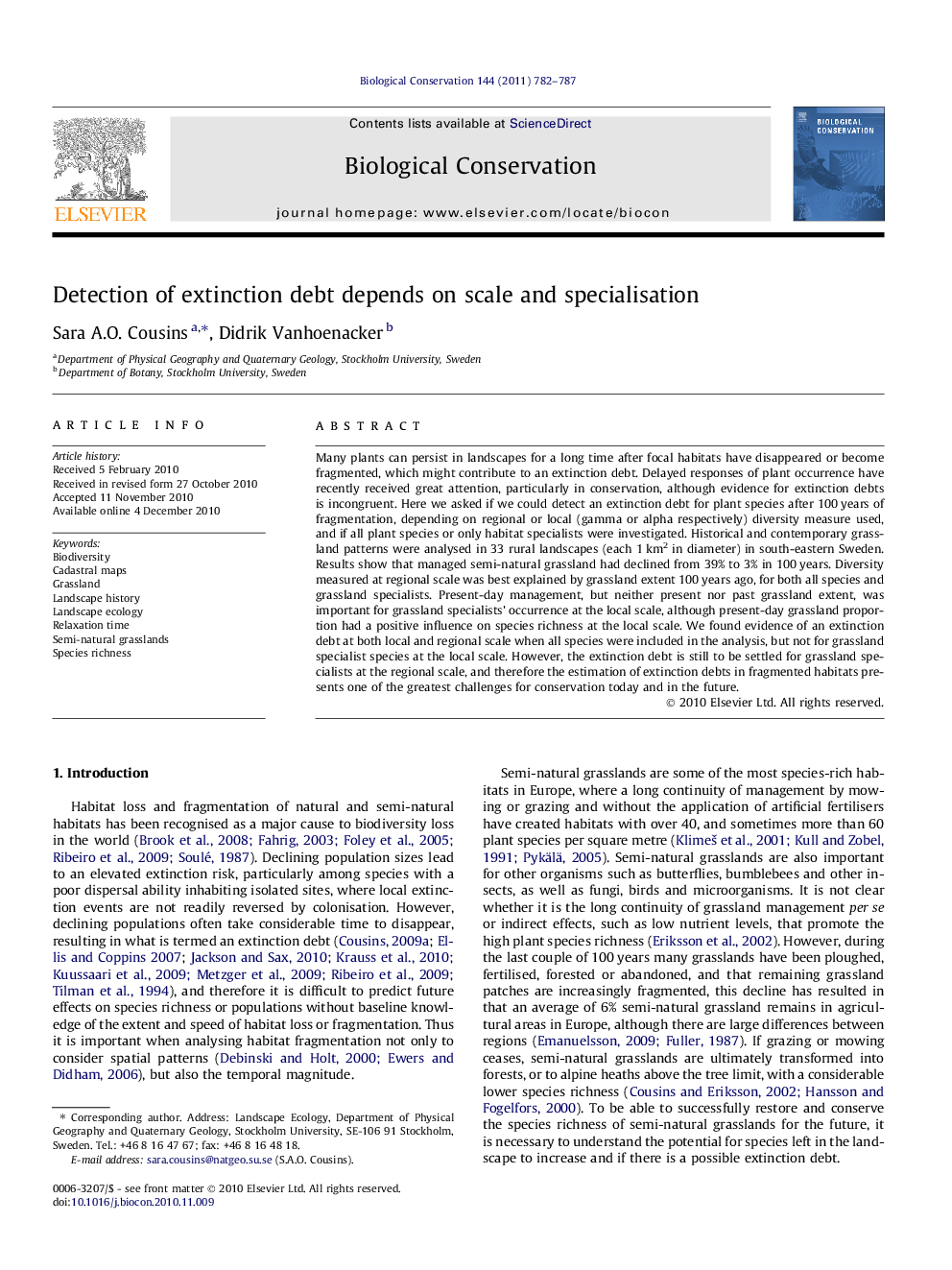| کد مقاله | کد نشریه | سال انتشار | مقاله انگلیسی | نسخه تمام متن |
|---|---|---|---|---|
| 6301254 | 1304542 | 2011 | 6 صفحه PDF | دانلود رایگان |
عنوان انگلیسی مقاله ISI
Detection of extinction debt depends on scale and specialisation
دانلود مقاله + سفارش ترجمه
دانلود مقاله ISI انگلیسی
رایگان برای ایرانیان
کلمات کلیدی
موضوعات مرتبط
علوم زیستی و بیوفناوری
علوم کشاورزی و بیولوژیک
بوم شناسی، تکامل، رفتار و سامانه شناسی
پیش نمایش صفحه اول مقاله

چکیده انگلیسی
Many plants can persist in landscapes for a long time after focal habitats have disappeared or become fragmented, which might contribute to an extinction debt. Delayed responses of plant occurrence have recently received great attention, particularly in conservation, although evidence for extinction debts is incongruent. Here we asked if we could detect an extinction debt for plant species after 100Â years of fragmentation, depending on regional or local (gamma or alpha respectively) diversity measure used, and if all plant species or only habitat specialists were investigated. Historical and contemporary grassland patterns were analysed in 33 rural landscapes (each 1Â km2 in diameter) in south-eastern Sweden. Results show that managed semi-natural grassland had declined from 39% to 3% in 100Â years. Diversity measured at regional scale was best explained by grassland extent 100Â years ago, for both all species and grassland specialists. Present-day management, but neither present nor past grassland extent, was important for grassland specialists' occurrence at the local scale, although present-day grassland proportion had a positive influence on species richness at the local scale. We found evidence of an extinction debt at both local and regional scale when all species were included in the analysis, but not for grassland specialist species at the local scale. However, the extinction debt is still to be settled for grassland specialists at the regional scale, and therefore the estimation of extinction debts in fragmented habitats presents one of the greatest challenges for conservation today and in the future.
ناشر
Database: Elsevier - ScienceDirect (ساینس دایرکت)
Journal: Biological Conservation - Volume 144, Issue 2, February 2011, Pages 782-787
Journal: Biological Conservation - Volume 144, Issue 2, February 2011, Pages 782-787
نویسندگان
Sara A.O. Cousins, Didrik Vanhoenacker,